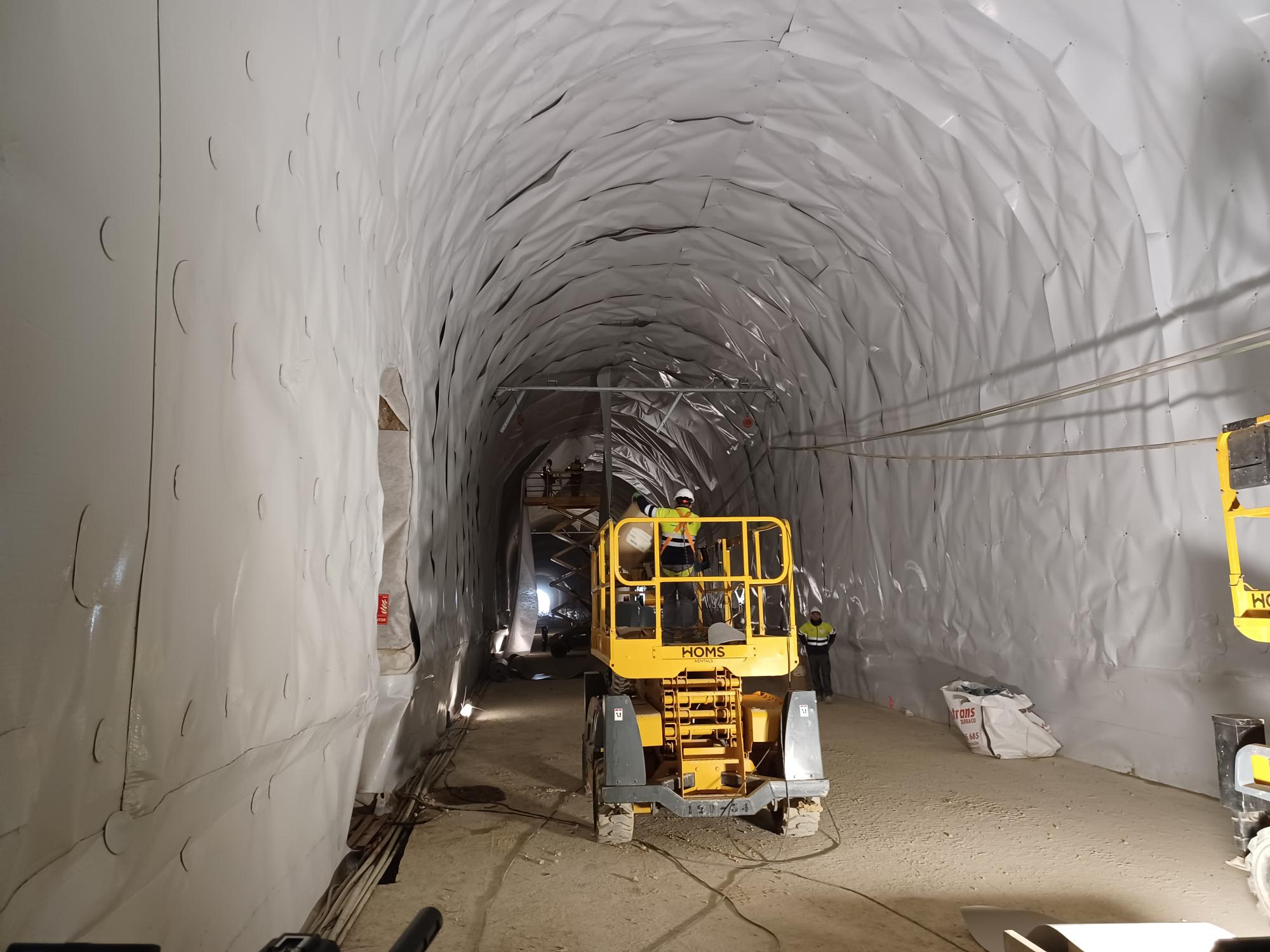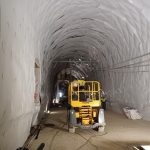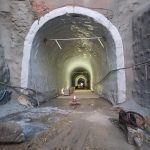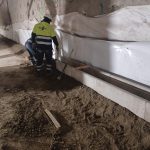
Adif has completed 70% of the works of the main phase for standard-gauge adaptation of the Tarragona – Sant Vicenç de Calders rail section, an essential action and the most strategically important that is currently being carried out for the development of the Mediterranean Corridor in Catalonia. As work is progressing according to the planned schedule, Adif expects that the work will be completed at the beginning of March.
This section is essential to ensure the connection of the Tarragona area with the south of the Mediterranean axis of the peninsula and with the north of Catalonia and the French border through the internal line of Vilafranca del Penedès, the connection with the strategic core of Castellbisbal and from there to the French border through the Mollet-El Papiol branch, the Mollet Junction and the high speed line to France.
The adaptation of the structure of the Roda de Berà tunnel, and the standard-gauge adaptation of this section through the installation of the third rail, will guarantee the connection of the large socio-economic, industrial and productive area of Tarragona with the north of Catalonia and the rest of Europe.
The axis between the Castellbisbal junction and the French border will thus be completed with the sections between the Vila-seca Junction, Sant Vicenç de Calders and Martorell, as well as with other actions underway in the Autonomous Communities through which the Corridor runs.
The422 metre-long Roda de Berà tunnel is the most unique infrastructure on the Tarragona – Sant Vicenç de Calders section of the line that connects with Barcelona, both along the coast (in Vilanova) and inland (in Vilafranca) and is used by an average of 120 passenger and freight traffic daily.
The work includes the expansion of the tunnel to adapt it to mixed gauge by installing a third rail on both tracks, which will allow the circulation of standard and Iberian gauge trains.
The work is not only aimed at promoting freight traffic by rail but will also benefit passenger transport. The project will improve travel times thanks to the adaptation of the infrastructure to allow trains to travel at a maximum speed of 120 km/hour and the elimination of temporary speed limits.
For its integration into the Mediterranean Corridor, its standard-gauge adaptation and rehabilitation are being undertaken, both in the platform and in the structural elements. With the works underway, both objectives will be achieved: facilities adapted to the interoperability standards necessary for the circulation of freight trains in both gauges and an infrastructure with maximum levels of structural stability, durability and robustness, where the existing temporary speed limitation will also be eliminated.
The Mediterranean Corridor is a strategic project and a preferred route for Spain’s connections with Europe. In its coastal branch, its development will contribute to structuring the territory by linking Andalusia, the Region of Murcia, the Valencian Community and Catalonia with Europe in standard gauge. It will also promote interoperable and more sustainable mobility and competitiveness for companies in the Mediterranean Arc and its area of influence, promoting the transport of goods by rail.
In addition, all the works deployed on the corridor are of great importance to the fight against climate change. Its contribution to the decarbonisation of transport is reflected in a reduction of up to 5.5 million tonnes per year of CO2 emissions.
The 2024 financial year closed with a historic investment in the Mediterranean Corridor, as the overall value of the works executed amounted to EUR 1.28 billion, 33% more than in 2023, when the investment made reached EUR 964 million. This record of project execution confirms the Ministry’s strong commitment to developing this infrastructure that seeks to improve rail connectivity from Algeciras to the border with France. Specifically, 65 contracts were put out to tender in the Mediterranean Corridor last year worth EUR 1.4 billion.
Share on:







